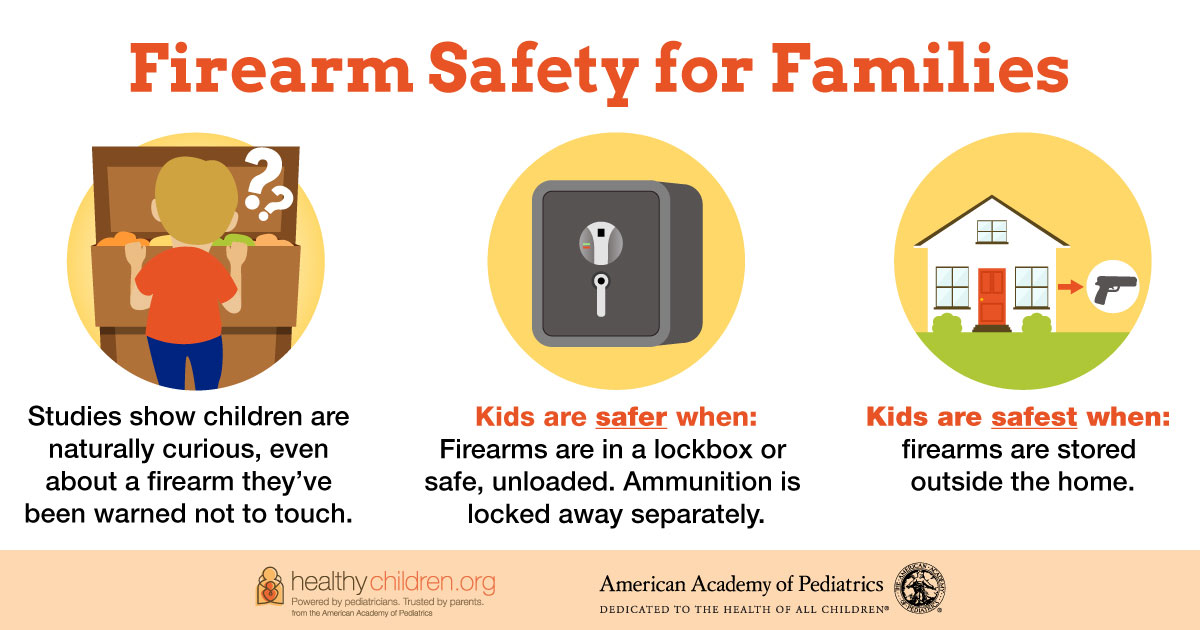Pediatric Bioethics
August 2022
The Pediatrician's Role in Reducing Gun Violence: Ask About Gun Ownership
Co-author: Vanessa Watkins, MPH, FACHE, CHES | Administrative Director, Certificate Program in Pediatric Bioethics | Bioethics Program Manager
Co-author and Column Editor: Brian Carter, MD | Neonatal/Perinatal Medicine | Interim Director, Pediatric Bioethics | Professor of Pediatrics, UMKC School of Medicine
As of July 21, 2022, 935 gun-related deaths have been reported in the U.S. for children aged 0-18 since the start of 2022.1 Additionally, thousands of children have been impacted as their family members, neighbors, community members and friends have been killed by firearms.
Much has been written about gun violence and its impact on children. Frequent and increasingly horrific mass shootings continue to make headlines, and numbers of individual gun-related injuries and deaths continue to climb. In 2020 – for the first time in 60 years – firearms surpassed motor vehicle accidents as the leading cause of death among those under 19.2 From 2019 to 2020, there was a sharp 13.5% increase in the crude rate of firearm-related deaths.3 The pandemic is noted to be part of the reason for the recent increase, although firearm injuries have been trending upward since 2014, and motor vehicle safety and advocacy have conversely increased.4
See Reference 3, Figure 1 for increase of firearm-related deaths from 2019 to 2020.
Approximately a third of U.S. children live in homes with guns, and 4.6 million children live with unlocked, loaded guns in the home.5 From an ethical perspective – as a measure of safety and preventing harm – pediatricians have a duty to ask their patients and families about gun ownership and gun safety. During a medical appointment, when the clinician asks about other safety measures and risk factors such as motor vehicle and bicycle safety, alcohol and drug use, sexual activity, and more, pediatricians have an opportunity to frame questions for the safety of all.

The infographic above was created by the American Academy of Pediatrics (AAP) and originally published on the Guns in the Home: Keeping Kids Safe page on healthychildren.org.5 Permission was obtained to include the infographic with the August 2022 Pediatric Bioethics Link article.
The American Academy of Pediatrics (AAP) continues to provide excellent resources for pediatricians, including resources for parents (linked below) and recommendations such as this policy statement authored by Children’s Mercy Emergency Medicine Physician Dr. Denise Dowd and colleagues in 2012.
“Firearm-Related Injuries Affecting the Pediatric Population” policy statement excerpt:
The absence of guns from children’s homes and communities is the most reliable and effective measure to prevent firearm-related injuries in children and adolescents. Adolescent suicide risk is strongly associated with firearm availability. Safe gun storage (guns unloaded and locked, ammunition locked separately) reduces children’s risk of injury. Physician counseling of parents about firearm safety appears to be effective, but firearm safety education programs directed at children are ineffective. The American Academy of Pediatrics continues to support a number of specific measures to reduce the destructive effects of guns in the lives of children and adolescents, including the regulation of the manufacture, sale, purchase, ownership, and use of firearms; a ban on semiautomatic assault weapons; and the strongest possible regulations of handguns for civilian use.6
Notably, this guidance is evidence-based and remains the AAP’s position on this issue. Pediatricians are respected community members that have a role to play with individual families in impacting this public health and safety issue.
Recently, the AAP’s “Testimony by Members of the American Academy of Pediatrics Submitted for the U.S. Senate Committee on the Judiciary Hearing, ‘Protecting America’s Children from Gun Violence’ June 15, 2022” includes firsthand accounts by pediatricians across the U.S. that have directly treated children impacted by gun violence.7,8
Children’s Mercy provides free gun locks at all Children’s Mercy locations, no questions asked. Additionally, local law enforcement agencies9 and the organization Grandparents for Gun Safety provide gun locks.10
It may be difficult to bring up the issue of gun ownership, as this may be deemed a sensitive topic by some. We recommend you continue to ask all families with respect and concern for all. With empathy and humility, we believe parents and children will appreciate your concern for their wellbeing.
Resources for families:
- Center for Childhood Safety
- Handguns in the Home
- Children and gun safety: What to know and do - Harvard Health
- Grandparents for Gun Safety
- Project ChildSafe
Resources for community providers:
- Firearm-Related Injury and Death in the United States: A Call to Action from the Nation’s Leading Physician and Public Health Professional Organizations
- Is Patient Gun Ownership: 'None of Our Business'?
References:
- https://www.gunviolencearchive.org/
- https://www.npr.org/2022/04/22/1094364930/firearms-leading-cause-of-death-in-children
- https://www.nejm.org/doi/full/10.1056/NEJMc2201761
- https://www.npr.org/2022/01/28/1076396871/gun-violence-rise-killing-children-pandemic
- https://www.healthychildren.org/English/safety-prevention/at-home/Pages/Handguns-in-the-Home.aspx
- https://publications.aap.org/pediatrics/article/130/5/e1416/32375/Firearm-Related-Injuries-Affecting-the-Pediatric?autologincheck=redirected
- https://downloads.aap.org/DOFA/06-15-22%20AAP%20Member%20Testimony%20on%20Gun%20Violence.pdf
- https://publications.aap.org/aapnews/news/20622/Pediatricians-submit-testimonials-on-gun-violence
- https://projectchildsafe.org/safety/get-a-safety-kit/
- https://grandparentsforgunsafety.org/stand-with-us/lock-it-for-love/

